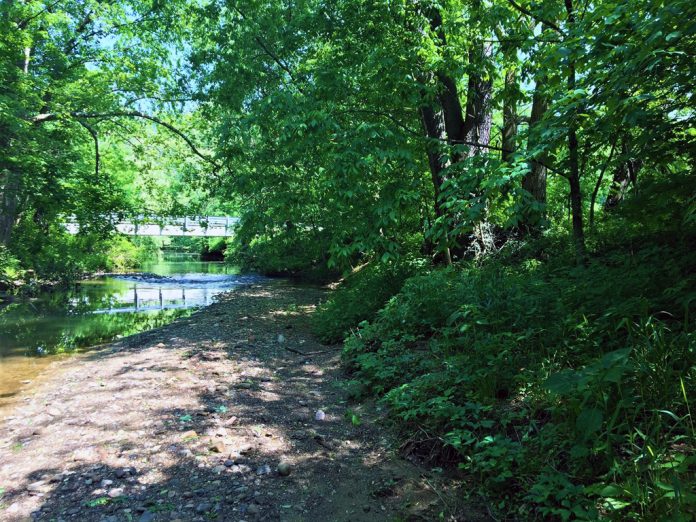UNIVERSITY PARK, Pa. — At a time when Pennsylvania is largely counting on riparian buffers to achieve water-quality improvements needed to meet the state’s obligations for cleaning up the Chesapeake Bay, a multidisciplinary Penn State research team is studying whether the agricultural pollution-prevention devices are working properly.
Riparian buffers — areas adjacent to streams or wetlands that contain a combination of trees, shrubs and grasses — are managed differently from the surrounding landscape to provide conservation benefits. In agricultural areas, buffers intercept sediment, nutrients, pesticides and chemicals of environmental concern in surface runoff and in shallow subsurface water flow to reduce the amounts that get into waterways.
The most recent Watershed Implementation Plan that Pennsylvania submitted to the U.S. Environmental Protection Agency includes 83,000 acres of new riparian buffers along streams on agricultural lands. The estimated cost to establish those buffers exceeds $20 million annually through 2025. Obviously, it would be helpful for state and federal officials to know how effective buffers really are, said research team leader Heather Preisendanz, associate professor of agricultural and biological engineering.
Questions have emerged about existing buffers’ capabilities, she said. In a recent survey of 52 buffers at long-term agricultural research sites, 27 were underperforming by as much as 78%, damaged by breaches called concentrated flow pathways. These torrents of varying intensity undermine buffers’ integrity by “short circuiting” them, essentially enabling surface runoff to enter streams untreated.
Such short-circuiting can render the potential pollution-mitigation properties of buffers ineffective in the most extreme cases.
“If we’re going to put such a large portion of our eggs into the buffers basket, then we want to make sure that they are performing the way we need them to,” Preisendanz said. “Pennsylvania is relying on forested buffers to meet 49% of its phosphorus-reduction goals and 16% of its nitrogen-reduction goals. If buffers underperform, then Pennsylvania and other states that use them as an integral component of watershed management plans will struggle to achieve load-reduction goals. We definitely need to understand how to make buffers as effective as possible to meet these goals.”
Grant project
Funded by a three-year, $750,000 grant from the U.S. Department of Agriculture’s National Institute of Food and Agriculture, Preisendanz and colleagues in the College of Agricultural Sciences will evaluate the role that concentrated flow pathways play in undermining the ability of riparian buffers to mitigate excess nutrients, sediments and pesticides. The researchers will also develop solutions for restoring and maintaining buffer integrity.
The study will include both field studies and computer modeling. The team selected two small stream basins that are heavily influenced by agriculture as case study watersheds. They will measure and analyze riparian buffer performance in the headwaters of Mahantango Creek in Dauphin County and in the Halfmoon Creek watershed in Centre County. Both streams are impaired due to agricultural sources of sediment.
Modeling will include new, innovative methods of measuring the volume, intensity and path of runoff using modern GIS tools and drone image mapping. The researchers will evaluate runoff for nutrient, sediment, pesticides and chemicals of environmental concern, determining the extent to which “hot spots” for nutrients and pesticides overlap with concentrated flow pathways drainage areas.
“This will allow the team to identify the most vulnerable locations in the watersheds and offer appropriate solutions for minimizing the impact of these ‘hot spots’ on water quality,” Preisendanz said.
Finally, the researchers plan to conduct farmer surveys to evaluate the willingness of farmers to adopt runoff-control technologies and develop a coupled water quality and socioeconomic model that can inform watershed-scale decision-making regarding adoption of new riparian buffers.
Results of the field-based studies will be used to develop and validate computer-based toolkits that can predict the occurrence of concentrated flow pathways, Preisendanz pointed out. “Overall, the results of this project will provide the data and tools needed to restore and maintain buffer integrity,” she said.










